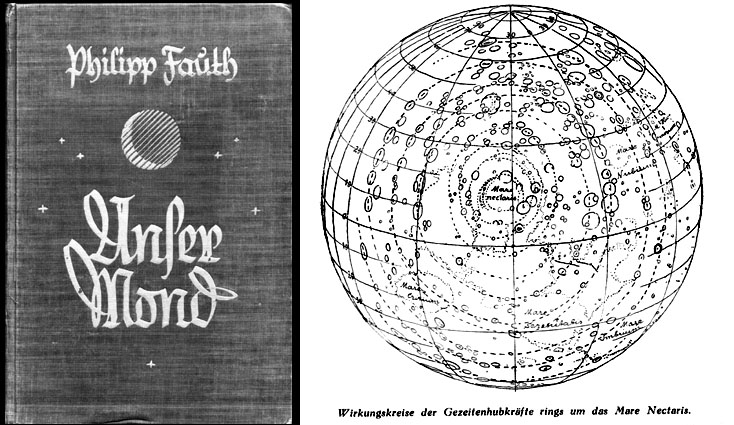July 17, 2004
Our Moon
Image Credit: Chuck Wood |
|
Our Moon During the 1800s lunar studies were dominated by the great German selenographers: Schroeter, Lohrmann, Madler and Schmidt. In the late 1800s and the 1900s the Moon mapping mantle passed to the British: Nasmyth and Carpenter, Neison, Elger, Goodacre, and Wilkins and Moore. But one idiosyncratic German observer of remarkable determination and drafting skill continued the German style of careful drafting and analytical thinking about the Moon. Phillip Fauth was a school teacher, but he was obsessed with the Moon and observed it avidly for 50 years. Fauth's magnum opus was Unser Mond (Our Moon), published in 1936. This relatively rare book is essentially the description of craters shown on his large map, which unfortunately wasn't published until 1964. Each crater has a description ranging in length from one paragraph (Kant) to 3.5 pages (Alphonsus). As far as my broken German informs me, for each crater Fauth included morphologic details and peak heights and crater depths from many previous observers. In design and content, Fauth's book is similar to the 1955 The Moon of Wilkins and Moore, but the descriptions in Unser Mond seem more detailed. The right side of the image above demonstrates that unlike virtually all previous observers, Fauth noticed large-scale features. His diagram, which is centered on Mare Nectaris, shows that he recognized the multi-ring structure of the Nectaris basin, but he extended his rings far beyond those defined by scarps to include arcuate alignments of craters. His inner rings for Nectaris represent perhaps their first discovery, but his outer crater circles are simply chance alignments of craters having nothing to do with Nectaris. Related Links: Yesterday's LPOD: Raisin Pits Tomorrow's LPOD: A New Hit DVD |
Author & Editor: |
COMMENTS?
Register, Log in, and join in the comments.




